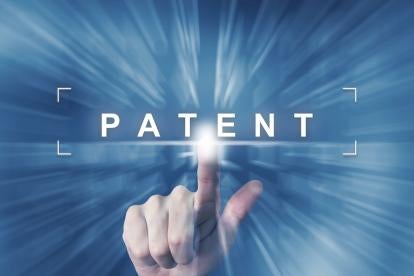Addressing the issue of divided infringement, the US Court of Appeals for the Federal Circuit upheld the district court’s dismissal of patent owner’s claims of infringement because not all steps of the claim were performed, either directly by the defendant or by attribution. Medgraph, Inc. v. Medtronic, Inc., Case No. 15-2019 (Fed. Cir., Dec. 13, 2016) (Lourie, J).
The claims at issue are drawn to systems and methods for improving or facilitating diagnosis and treatment of patients, with steps of using a device to take medically relevant measurements from a patient, ensuring that the device is detached after measurement is complete, uploading the measurement data into a computer, and transmitting the data to a central storage device where physicians can then access the data. Medtronic makes and sells various systems for diabetes management in which a patient uploads data (e.g., blood sugar readings) to Medtronic’s central computer server. Patients can opt to share the data with their physicians through remote transmission.
Some of the claimed steps are performed by patients and doctors, not by Medtronic itself—resulting in so-called “divided infringement.” The case law on divided infringement has been developing since the Federal Circuit decided Akamai I in 2010 (IP Update, Vol. 14, No. 1). After four more rounds in the courts, the Federal Circuit issued a per curium en banc decision in 2015 (Akamai V) that clarified when acts of another may be attributed to an accused infringer in the context of divided infringement (IP Update, Vol. 18, No. 6). In Akamai V, the Court held that “attribution” is proper in either of two circumstances: (1) when a third party performs steps of the claim under the direction or control of the accused infringer, e.g., when a contractual obligation or agency relationship exists, or (2) “when an alleged infringerconditions participation in an activity or receipt of a benefit upon performance of a step or steps of a patented method and establishes the manner or timing of that performance” (emphasis added).
Applying this standard to Medtronic’s accused systems, the Court found that Medtronic did not perform all of the claimed steps because the patient- and doctor-performed steps could not be properly attributed to Medtronic. Although Medtronic instructed its users to perform the claimed steps, that was not enough for attribution under Akamai V because the evidence “indisputably” showed that Medtronic does not condition the use of its systems on performance of the claimed steps. For example, Medtronic does not deny patients access to the accused systems if they do not remove the measurement device after the measurement is taken. In fact, the opposite is true: Medtronic’s patients actually benefit when its continuous glucose monitoring device is not removed from the body. Similarly, Medtronic does not deny any benefit to its users if they choose not to perform the step of synchronizing the measurement data to allow their physicians to access the data remotely. Instead of synchronization, patients can bring hard copy printouts of their measurements to the physician’s office, or data can be extracted locally from their devices while at the physician’s office.
The case also dealt with a second issue relating to proper construction of “and.” The Court acknowledged that there have been prior cases in which “and” was properly construed to mean “or,” but noted that all of those cases had “a common theme that distinguishes them from this case: the specification compels a disjunctive construction for ‘and’” (emphasis in original). In the present case, however, the Court concluded that the specification could be read as supporting either a disjunctive or a conjunctive meaning. As such, plain meaning controls: “and” means “and.”



 />i
/>i

